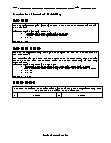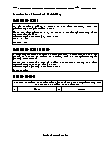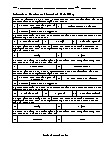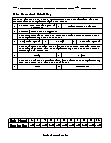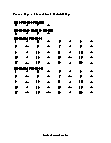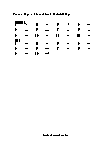Theoretical Probability Worksheets
What is Theoretical Probability? We all encounter situations where we either have to choose or predict an occurrence. Based on the particular situation, we decide whether that occurrence is going to happen or not. The chance of an event to take place is the central idea in probability. Essentially, probability quantifies the chances of non-occurrences and occurrence of an event. Theoretical probability is the core idea behind probability. When using theoretical probability to predict the occurrence of an event, we do not need to conduct an experiment. In theoretical probability, we should have an idea about the situation and an understanding of the occurrence of an event. Theocratical probability is defined as the ratio of the number of favorable outcomes to the number of possible outcomes. Probability of Even P(E) = Number of favorable outcomes/ Number of Possible outcomes. For instance, if we have to find out the probability of rolling a 5 on a fair die. We do not need to actually roll a die to know the probability. We already know that there are 6 possible outcomes when we roll a die. There are 1, 2, 3, 4, 5, and 6. Hence, using the formula for the theoretical probability: P(E) = Number of favorable outcomes/ Number of Possible outcomes. P(E) = 1/6. Therefore, the probability of rolling a 5 on a fair die is 1/6.
-
Basic Lesson
Guides students through the beginner skills of Theoretical Probability. What is the probability that you will pick an ace in a row out of a 52- card deck? One card out of 52 cards can be selected in 52 different ways. Out of these 52 cases four cases will favor the event selecting an ace (any card from 4). Probability of selecting a Club card = Number of cases favoring the event of selecting a club. Total number of different ways in which we can select a card.
View worksheet -
Intermediate Lesson
Demonstrates how to use advanced skills to tackle Theoretical Probability problems. If you randomly choose a letter in the word "WEIGHT", find the probability that you choose a "T". Since the word contains 1 T, it means T has one possibility to be selected out of SIX. Probability of selecting T, P(A) = 1/6.
View worksheet -
Independent Practice 1
A really great activity for allowing students to understand the concepts of the Theoretical Probability. Example: A die is tossed. It is a fair, unbiased die. List the outcomes for each event below and the probability of the event.
View worksheet -
Independent Practice 2
Students use Theoretical Probability in 20 assorted problems. The answers can be found below.
View worksheet -
Homework Worksheet
Students are provided with 12 problems to achieve the concepts of Theoretical Probability.
View worksheet
Geometry Quotes That Make Sense:
"The only angle from which to approach a problem is the TRY-Angle."
